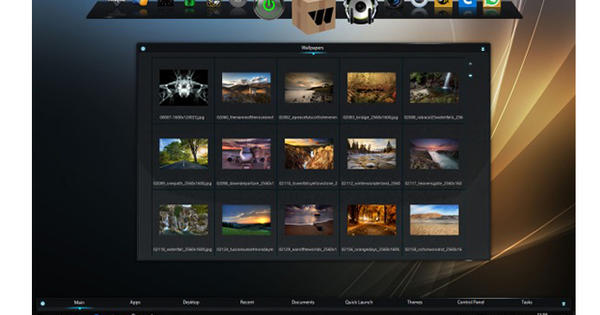The Xiaomi Pocophone F1 is a Chinese smartphone, which offers top specifications for a friendly price. For about 350 euros you have specifications that come with devices of twice this price. We've heard that story before...
Xiaomi Pocophone F1
Price approximately € 349,-Colour Gray
OS Android 8.1 (Oreo)
Screen 6.2 inch amoled (2246x1080)
Processor 2.8GHz octa-core (Snapdragon 845)
RAM 6GB
Storage 64GB
Battery 4,000mAh
Camera 12 megapixel dualcam (rear), 5 megapixel (front)
Connectivity 4G (LTE), Bluetooth 5.0, Wi-Fi, GPS
Format 15.6 x 7.5 x 0.9 cm
Weight 182 grams
Other fingerprint scanner, usb-c, dualsim, headphone port
Website www.poco.net 9 Score 90
- Pros
- Value for money
- Specifications
- Battery life
- Screen
- Negatives
- No NFC
- Android 8 with MIUI
The Pocophone is reminiscent of the OnePlus One, the first OnePlus smartphone that appeared in 2014. For 299 euros you had a device that offered about the same as the top smartphones of the time. In the meantime, OnePlus has changed course and the smartphones are indistinguishable in terms of price and parts. That is not to say that there is no longer a demand for good, affordable smartphones. Xiaomi is trying to jump into the vacuum that OnePlus leaves behind with the online brand Pocophone. The Pocophone F1 is a bit more expensive than the OnePlus One at the time: around 349 euros. You have to pay attention that the smartphone must be imported from China, so you have to take into account possible import tariffs. You can also obtain the Pocophone F1 smartphone from European web shops, then you do not pay an import tax, but the purchase price is often a bit higher. These webshops also often offer more clarity when it comes to warranty.




Top specs
For that 350 euros you get a lot in return: the most powerful Snapdragon 845 processor, 6GB of RAM and 64GB of storage memory, which you can expand with a memory card if desired... Or a second SIM card. There is also a huge 4,000 mAh battery placed in the smartphone and there is a dualcam on the back. Anyone familiar with the specs knows that this is quite impressive. Smartphones with similar specifications fall in the price ranges from 500 to 800 euros. Xiaomi has had to do a consolidation in the specs: there is no NFC chip, which you use for mobile payments, for example. But specifications are only theory, how does the device work in practice?
In any case, the Pocophone F1 does not look like a budget smartphone. At the front is a large screen, with an iPhone X-like screen notch (also called a notch) at the top. The screen edges on the side and top have remained small, but the screen edge is unfortunately very thick at the bottom. The back is made of plastic, so the Pocophone F1 is not such a fingerprint magnet as all those generic glass smartphones. A sturdy metal edge has been placed around the device and in terms of connections you will simply find a USB-c port and a headphone jack.
The Pocophone is not overly large, despite the screen having a diameter of 6.2 inches on paper. Due to an alternative screen ratio of 19 by 9, the size is a fraction smaller than most other top smartphones. The LCD screen has a full-HD resolution and is of acceptable quality. It is bright enough and the color rendering is good enough. The downside of the screen is the contrast, white surfaces also look a bit gray. In terms of display, it is simply not as impressive and lively as the AMOLED screen of more expensive smartphones. But it can qualitatively compete with the better screens in the same price range, such as the Moto G6 Plus.
For some, it can be a big disadvantage in use that Netflix and Amazon Prime do not play in full HD, which may be traced to the DRM requirements of these apps.
The benchmarks prove that the Pocophone F1 is powerful. The most powerful apps and games run fine.endurance runner
The benchmarks prove that the Pocophone F1 is powerful. The most powerful apps and games run fine on the Pocophone F1, although the device can get quite hot if you load it heavily. The smartphone also scores impressively well in terms of endurance, a day or two is perfectly feasible. In the box of the Pocophone F1 you will find a fast charger, which charges up to forty percent in half an hour. That doesn't break any speed records, but the fact that there is a fast charging function at all is unusual for this price range.
Android 8.1
The Pocophone F1 is the new budget king in terms of telephone, but unfortunately the competition trumps the Pocophone on software. At the moment, the smartphone still runs on Android 8.1 (Oreo), fortunately with a fairly recent security patch (October 2018). When an update to Android 9 will appear, that remains to be seen. It is also questionable what we can expect from the update policy. Xiaomi's update policy is reasonable, but are they implementing it with the Pocophone sub-brand?
More and more competitors are opting in the lower price range for Android One, a clean version of Android, which is supported by Google itself with quick updates. Unfortunately, that is not the case with the Pocophone F1: Android has its own shell processed MIUI Global 10.0. The skin is not very radical, but an improvement compared to a bare Android? Not that either. The settings menu is cluttered, the icons a bit childish and there is far too much bloatware, from Microsoft, Facebook and Xiaomi themselves, such as a double browser or even a Security app that cannot be removed and thus smuggles deceptive antivirus onto your smartphone. Hopefully, Xiaomi chooses to equip the Pocophone F2 with Android One as well.



Camera
On the back of the Pocophone F1 you will find a dualcam. Don't expect the same functionality as the most expensive iPhones and Samsung Galaxy's. For example, you cannot use the second lens to zoom in without loss of quality. This is only for portrait photography, so you can take photos with a depth of field effect (also called bokeh). It's a shame you're missing some advanced features of the dual camera, and the camera app has been adopted almost one-to-one from Apple. The camera doesn't shoot wrong photos at all, but when you put them next to photos from more expensive smartphones, such as the OnePlus 6, you do see differences. The photos of the Pocophone are a bit duller and less detailed. But in general: really not wrong! Compared to the other smartphones in the price range, the Pocophone has one of the better cameras.
The selfiecam is generally also somewhat faded and suffers a lot from bright light sources and a somewhat low resolution. Not really suitable for the most beautiful selfies unfortunately. As is the case with many Chinese smartphones, you have some beauty filters in the camera app that make your face look incredibly plastic.


Alternatives
If you look at the specifications, the Pocophone is unparalleled in speed for its price range and the same goes for the battery life. However, the disadvantage is the software, if that is very important to you, you can opt for alternatives such as the Motorola Moto G6 Plus or the Nokia 7 Plus. You get a slightly more luxurious look with smartphones from Huawei (such as the Mate 20 Lite), but these too cannot keep up with the speed of the Pocophone F1
Conclusion
Availability may be problematic, but apart from that: for the price tag of around 350 euros, you can't currently get a better, more powerful smartphone than the Pocophone F1. On specifications, the device comes with smartphones of about 800 euros. There are concessions, for example, the screen and camera and build quality are fine. But not as impressive as the most expensive smartphones, and of course that doesn't matter at all. Only the MIUI software with Android 8 drops a stitch. Hopefully Xiaomi will be able to solve that with the Pocophone F2, for example with Android One.
Thanks to Gearbest for providing us with a test sample of the Xiaomi Pocophone F1.

